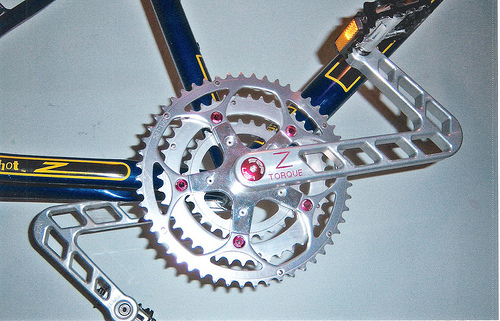Slowman wrote:
why isn't torque a better measure of fiber recruitment than cadence?
Neither are particular useful for that per se.
Muscle fibre recruitment in dynamic scenarios is much more a function of power than either of torque or cadence.
Slowman wrote:
... it occurred to me to ride - as a thought experiment - according to fiber recruitment during the power phase of the pedal stroke. or as close to fiber recruitment as i could get to it.
cadence is sort of the inverse of that. torque speaks directly that.
While pedal force varies a lot during a pedal stroke and pedal velocity doesn't, peak and average torque (for steady state riding) are still pretty much related by a reasonably fixed factor.
Metabolically, knowing your torque or cadence is not particularly helpful, while knowing power most definitely is.
For neuromuscular insight then Quadrant Analysis is your friend.
In any case, cadence and torque are not really independently controllable variables at our disposal* but we can control our power output.
The things we
can control:
- effort level (i.e. power)
- gear choice
Cadence and torque are then simply outcomes of those choices and the resistance forces acting against us at the time.
Far better to focus on effort level and choose a gear appropriate for the situation.
* except perhaps for the artificial scenario of cycling on an ergometer set to maintain a fixed work rate irrespective of what the rider does.
http://www.cyclecoach.com http://www.aerocoach.com.au

